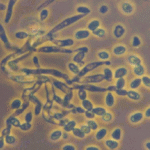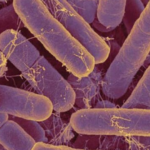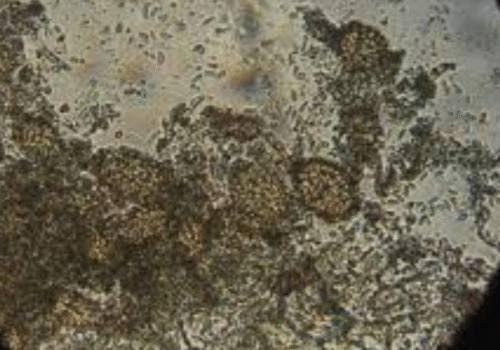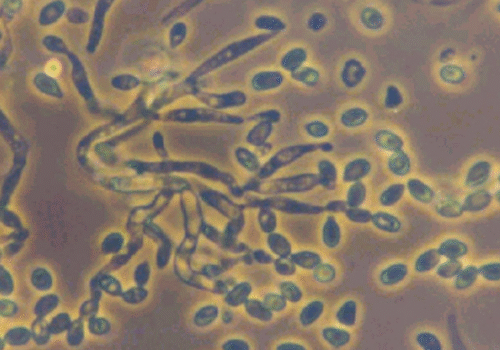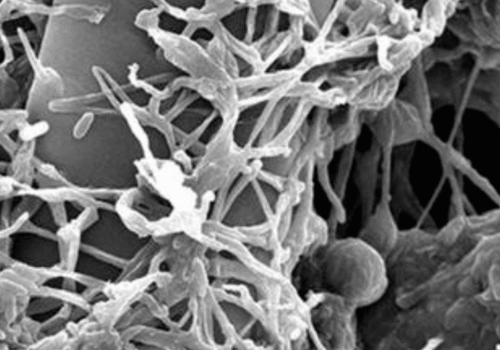Agrobacterium radiobacter: A Soil Bacterium Turned Biocontrol Agent
Agrobacterium radiobacter is a rod‑shaped, motile, Gram‑negative bacterium widely distributed in soil and the root microbiome of dicotyledonous plants
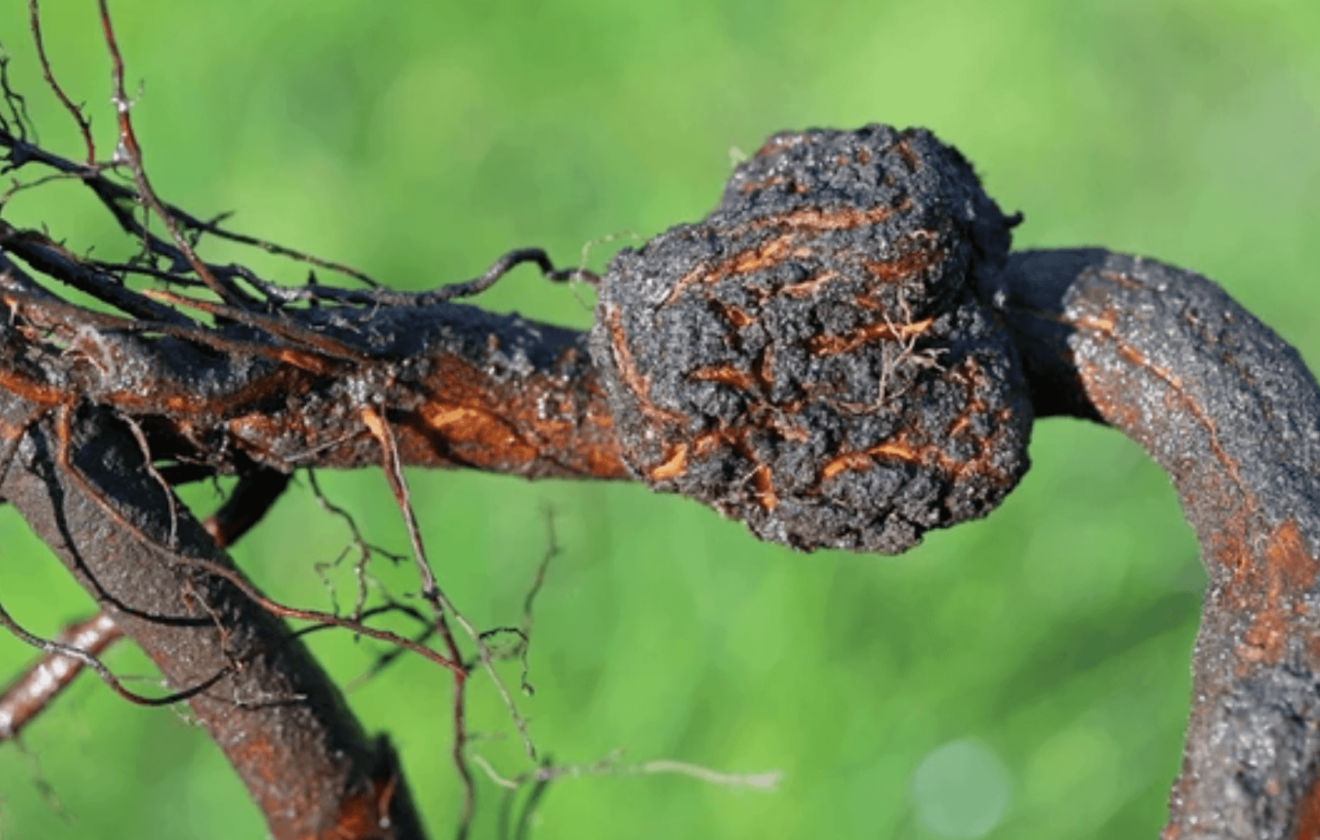
- Overview of the Microbe
- Natural Ecology and Host Interactions
- Biocontrol of Crown Gall Disease
- Mechanisms of Antagonism and Plasmid Biology
- Genetic Engineering and Biotechnological Applications
- Challenges and Future Prospects
- Spotlight on Research: Structural Basis of Self-Immunity in A. radiobacter K84
- Conclusion
- References
Overview Table of Azospirillum amazonense
- Feature
Description
- Scientific Name
Agrobacterium radiobacter (syn. Rhizobium radiobacter)
- Classification
Gram-negative, rod-shaped; Family Rhizobiaceae; Order Rhizobiales
- Habitat
Soil, rhizosphere of dicotyledonous plants, plant wounds
- Key Functions
Natural coloniser of plant roots; biocontrol of Agrobacterium tumefaciens
- Notable Abilities
Synthesis of antibacterial compounds (agrocin 84); plasmid-mediated antagonism; biofilm formation
- Applications
Biocontrol of crown gall disease; plant transformation tool; soil probiotic formulations
- Genetic Engineering Potential
Shuttle vectors derived from Ti and Ri plasmids; marker exchange for improved biocontrol strains
- Challenges
Stability of biocontrol plasmid in field; variable efficacy in different soil types
- Future Prospects
Genome-based strain improvement; consortia with other biocontrol agents; integration into circular-bioeconomy
Overview of the Microbe#
Agrobacterium radiobacter is a rod‑shaped, motile, Gram‑negative bacterium widely distributed in soil and the root microbiome of dicotyledonous plants[1]. As a rhizosphere colonizer, non‑pathogenic strains (notably K84) establish populations of 104–106 CFU per gram of root across woody and herbaceous hosts and can persist for up to two years under field conditions[3]. In the absence of plant hosts, its populations decline in soil or water, highlighting its reliance on root‑derived nutrients[3]. While generally benign or beneficial to plants—promoting growth in some arsenic‑contaminated systems via IAA and siderophore production—A. radiobacter has been isolated infrequently from immunocompromised human patients with indwelling devices.
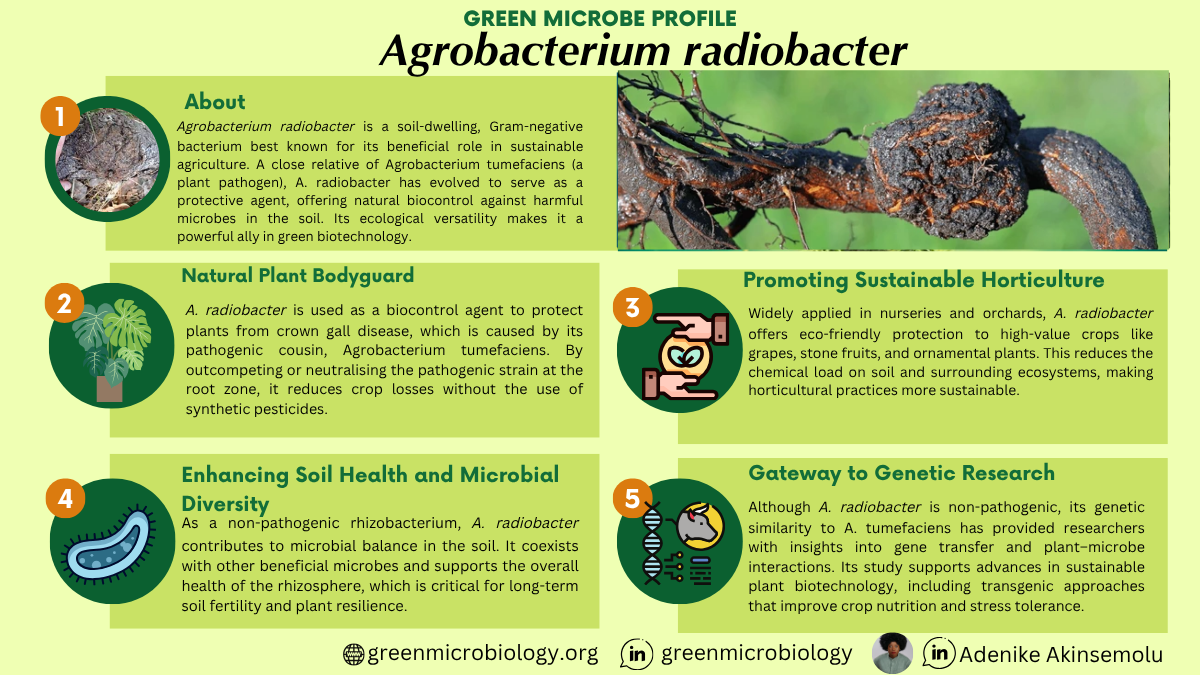
Natural Ecology and Host Interactions#
A. radiobacter is a common inhabitant of soil and thrives in association with plant roots. It is an efficient rhizosphere colonizer that can establish populations on a wide variety of plants [4]. For example, the bioontrol strain K84 can persist on roots of both woody and herbaceous plants at densities of 104–106 colony-forming units per gram of root, and it can survive in the rhizosphere for up to two years under field conditions [3]. In the absence of host plants, its numbers decline over time in soil or water, indicating that A. radiobacter prefers the nutrient-rich environment near roots [3]. Importantly, colonization by A. radiobacter appears to be mostly commensal: it does not benefit the plant in the manner of nitrogen-fixing rhizobia, but it also does not harm the plant in the absence of virulence genes. In rare cases, A. radiobacter has been isolated as an opportunistic pathogen in humans (particularly in immunocompromised patients with indwelling devices)[7]. Such occurrences are uncommon, and the bacterium is not typically associated with human disease. There is growing interest in beneficial roles of A. radiobacter strains in the environment; for instance, certain isolates show plant growth-promoting traits. One arsenic-resistant A. radiobacter strain was found to produce auxin (IAA) and siderophores, helping poplar trees tolerate and phytoremediate arsenic-contaminated soils[8]. These observations illustrate that A. radiobacter can interact with a range of hosts and environmental conditions, from plant roots to clinical settings, usually as a benign or beneficial presence.
Biocontrol of Crown Gall Disease#
Crown gall tumors on an infected Euonymus plant caused by Agrobacterium infection. The biocontrol strain Agrobacterium radiobacter K84 is applied to young plants to prevent such galls by inhibiting the pathogenic Agrobacterium.
Crown gall is a plant disease characterized by tumor-like growths (galls) on stems or roots, affecting over 140 species of dicotyledonous plants[1]. It is caused by Agrobacterium species (such as A. tumefaciens and A. vitis) that carry a Ti plasmid encoding genes to induce tumor formation in plant cells. Historically, crown gall was a serious problem in nurseries and orchards, leading to stunted growth or death of infected fruit trees, vines, and ornamentals[1][4]. In the early 1970s, an Australian researcher, Allen Kerr, discovered that a benign soil isolate (later identified as A. radiobacter strain 84, or K84) could protect plants from crown gall. Kerr and Htay (1974) demonstrated that K84 could biologically control crown gall, marking the first successful use of a bacterium to combat a plant bacterial disease[4]. This discovery was groundbreaking, as no effective chemical treatments for crown gall existed at the time[4].
Strain K84 and its use: A. radiobacter K84 is applied to susceptible plants (typically by dipping cuttings, roots, or seeds in a suspension of K84) before they are planted in the field[2]. The introduced K84 cells establish on the plant’s roots and effectively “exclude” or antagonize the pathogenic Agrobacterium in the soil. K84 competes with crown gall bacteria for space and nutrients on the root surface and, more importantly, produces an antimicrobial compound that specifically inhibits the crown gall pathogen[2]. This dual mode of action—competitive exclusion and antibiosis—allows K84 to prevent the pathogen from infecting wound sites on the plant where galls would otherwise form. The biocontrol has been remarkably effective. In Australia, for example, routine use of K84 virtually eliminated crown gall on stone fruit and rose rootstocks; what was once a major nursery disease became difficult to even find on treated plants[4]. Economic analyses estimated that the crown gall biocontrol saves growers tens of millions of dollars annually by protecting crop yields and reducing cull rates[4].
K84 was the active ingredient in the world’s first registered microbial pesticide targeting a soil-borne plant disease. It was made commercially available in the late 1970s without patent restrictions (initially provided freely by researchers), enabling its rapid adoption worldwide[4]. The product has been sold under names like “Nogall” and approved in countries including Australia (since 1979), the United States (2000), Canada, New Zealand, Turkey, Japan, Chile, and South Africa[4]. To use K84, nurseries typically inoculate propagation material or young transplants, providing protection throughout the plant’s early growth. One limitation is that A. radiobacter K84 is effective primarily against Agrobacterium biovar 1 and 2 pathogens (such as classic A. tumefaciens on stone fruits and A. rhizogenes on ornamentals)[4]. It does not control crown gall on grapevines, which is caused by Allorhizobium vitis (formerly Agrobacterium vitis, biovar 3) that is naturally resistant to K84’s antibiotic[4]. As a result, crown gall remains an issue in grape production. Researchers have been exploring alternative biocontrol strains for grapes – for example, a strain called ARK-1 (a non-pathogenic A. vitis) has shown promise in reducing grapevine galls in field trials[4][6]. Despite such gaps in its host range, A. radiobacter K84 remains a landmark success in plant pathology and biocontrol, often cited as a model for how naturally antagonistic microbes can be harnessed to manage plant diseases in an environmentally friendly way.
Mechanisms of Antagonism and Plasmid Biology#
The crux of A. radiobacter K84’s biocontrol ability lies in its production of agrocin 84, a potent bacteriocin that specifically targets crown gall-inducing bacteria. Agrocin 84 is a modified adenine nucleotide molecule that acts as a “Trojan Horse” antibiotic[4]. It cleverly exploits the pathogen’s own physiology: crown gall bacteria feed on unique nutrients (opines) that are released by the plant tumors they create[4]. Agrocin 84 structurally mimics one such opine (called agrocinopine A) and is actively imported by pathogenic Agrobacterium cells via their opine transport systems[4]. Once inside the pathogen, agrocin 84 is enzymatically converted into a toxic form, dubbed TM84, which then wreaks havoc by blocking a critical enzyme for protein synthesis[4]. TM84’s specific target is the enzyme leucyl-tRNA synthetase, which is essential for charging tRNAs with the amino acid leucine[4]. By inhibiting this enzyme, TM84 effectively shuts down protein production in the susceptible bacterium, thereby killing or arresting the growth of the crown gall pathogen. This mode of action was elucidated through biochemical and genetic studies[4], and later confirmed by structural biology research showing TM84 lodged in the enzyme’s active site. Notably, agrocin 84 is highly selective – it harms Agrobacterium strains that have the Ti plasmid (and thus the opine uptake system), but it has no effect on most other bacteria or on plants[4]. This selectivity explains why using K84 does not upset the soil microbiome or cause environmental damage; it only targets the disease-causing bacteria.
To deploy such a targeted weapon without self-destruction, A. radiobacter K84 must protect itself from agrocin 84’s toxicity. The genes responsible for agrocin 84 biosynthesis (agn genes) and for self-immunity are carried on a 47-kb plasmid known as pAgK84[4]. Within this plasmid, K84 has a special version of leucyl-tRNA synthetase, encoded by the gene agnB2, which is resistant to the TM84 toxin[5]. In essence, K84 carries two copies of the leucyl-tRNA synthetase enzyme: the normal, toxin-sensitive version and the specialized AgnB2 version. TM84 can bind and inhibit the normal enzyme (in susceptible bacteria), but it cannot effectively bind the modified AgnB2 enzyme in K84[5]. A recent structural study revealed the basis of this immunity: the AgnB2 enzyme has evolved subtle structural changes that eliminate the requirement for tRNA in the antibiotic’s binding, thereby preventing TM84 from locking onto the enzyme’s active site[5]. If the key resistance mutations in AgnB2 are reversed, K84 becomes sensitive to its own antibiotic, confirming that these changes are what confer immunity[5]. This elegant self-protection mechanism allows K84 to pump out agrocin 84 into its surroundings without committing suicide in the process.
While agrocin 84 is the primary antagonistic factor, it is not the only one. Studies have found that K84 (and its derivatives) also produce a second bacteriocin called agrocin 434[4]. Agrocin 434, encoded by a different plasmid (pAgK434) present in some K84 strains, is active against certain Agrobacterium biovar 2 pathogens[4]. Though agrocin 434 is less well-known and not as universally potent as agrocin 84, its presence might widen the spectrum of biocontrol or help delay resistance development in target populations[4]. Interestingly, despite the long-term use of K84, there have been no confirmed reports of field populations of crown gall bacteria evolving true resistance to agrocin 84[4]. The specificity of agrocin uptake (relying on the pathogen’s own opine transport) and perhaps the backup of agrocin 434 may be factors that contributed to this durability.A crucial aspect of K84’s plasmid biology is plasmid transmissibility. The native pAgK84 plasmid is conjugative, meaning it has the machinery to transfer itself to other bacteria during cell-to-cell contact[4]. This raised an alarming scenario: what if pAgK84 moved into a pathogenic Agrobacterium strain? The recipient would acquire the agrocin production and immunity genes, potentially becoming an agrocin-resistant pathogen – a so-called “super pathogen” that could cause crown gall and resist K84’s biocontrol. In both laboratory and greenhouse experiments, researchers found that such plasmid transfer can indeed occur, albeit at low frequency[4]. Pathogenic isolates harboring plasmids similar to pAgK84 have occasionally been found in nature, suggesting horizontal gene transfer took place. To prevent this risk, scientists developed a safe derivative of K84 known as strain K1026. K1026 was created by deleting the genes required for plasmid transfer from pAgK84, rendering the plasmid non-transmissible[4]. Aside from this deletion, K1026 is genetically the same as K84 and still produces agrocin 84 and agrocin 434. Initially, regulators classified K1026 as a genetically modified organism (GMO) due to the use of recombinant DNA techniques in its construction[4]. However, since K1026 carries no foreign DNA (only a small deletion), many countries have since exempted it from GMO status, treating it like a naturally occurring mutant. K1026 was first registered in Australia in 1988 and subsequently replaced K84 in commercial products in several countries[4]. By using K1026, the biocontrol strategy eliminates the chance of creating agrocin-resistant pathogens via plasmid conjugation. Together, the combination of specific antibiotic production, self-immunity, and bioengineered safety makes A. radiobacter K84/K1026 a sophisticated and reliable biocontrol system.
Genetic Engineering and Biotechnological Applications#
The unique biology of Agrobacterium radiobacter (and its Agrobacterium relatives) has had far-reaching impacts beyond biocontrol of crown gall. Perhaps the most famous application of Agrobacterium is in the field of plant genetic engineering. The discovery that Agrobacterium transfers DNA (T-DNA) into plant cells during infection revolutionized plant biology[1]. By the early 1980s, scientists learned to disarm the Ti plasmid (removing the tumor genes) and use Agrobacterium as a natural genetic engineer to deliver desired genes into plants. This method, known as Agrobacterium-mediated transformation, became a cornerstone of creating genetically modified crops. While the strains used for plant transformation are usually derivatives of A. tumefaciens, the principle stems from the basic Ti plasmid system that A. radiobacter itself can carry or not carry. In fact, A. radiobacter and A. tumefaciens are so closely related that early experiments showed adding a Ti plasmid to a non-pathogenic A. radiobacter could convert it into a tumor-inducing strain[1]. This underscores that the pathogenic or “genetic engineer” trait in these bacteria is plasmid-encoded and transferable. Today, Agrobacterium-mediated DNA transfer is routinely used to create transgenic plants, and it all traces back to understanding the plasmid biology of this group of bacteria.
Biotechnology has also directly leveraged A. radiobacter K84 in other ways. The development of strain K1026, as described above, was an early example of using genetic engineering to improve a biocontrol organism. By employing restriction enzymes and ligase to remove the plasmid’s transfer genes, researchers enhanced the safety of the biocontrol without altering its efficacy[4]. This demonstrated that molecular biology could be applied to classical biocontrol to address evolutionary risks. Moreover, the agrocin 84 system itself has inspired new lines of research in antibiotic development. The concept of a “Trojan Horse” antibiotic that specifically targets certain pathogens is very appealing in medicine. Recognizing that agrocin 84 is essentially a Trojan Horse inhibitor of leucyl-tRNA synthetase, scientists have searched for analogous compounds against human pathogens. Recent work has identified other natural compounds that use a similar trick – hijacking nutrient uptake pathways to deliver antibiotics into cells[4]. These leucyl-tRNA synthetase inhibitors form a novel class of antimicrobials. The agrocin 84 paradigm provides a rational platform for designing such pro-drugs that would selectively target pathogens (for example, by mimicking substrates those pathogens uniquely import)[4]. In this way, A. radiobacter’s peculiar mode of antagonism has cross-pollinated into ideas for new anti-infective strategies in medicine.Another biotechnological application of A. radiobacter is in the area of environmental and agricultural bio-inoculants. As mentioned, certain strains have plant growth–promoting abilities. There is interest in deploying such strains to improve phytoremediation or to protect plants from stresses. For example, the arsenic-tolerant A. radiobacter D14 enhanced arsenic uptake in poplar trees by improving root growth and stress tolerance[8]. Additionally, some A. radiobacter strains form endophytic associations (living inside plant tissues without causing disease) that could be harnessed to boost plant health or resistance. These exploratory applications are still in the research stage, but they highlight the versatility of this bacterium. From enabling transgenic crops to serving as a biofertilizer or detoxifying agent, Agrobacterium radiobacter has proven to be a valuable ally in biotechnology. Its legacy, however, will always be tied to its original role as the prototype microbial biocontrol agent – a role that continues to influence how we manage plant diseases in the genomic era.
Challenges and Future Prospects#
Despite its successes, the use of Agrobacterium radiobacter K84 (and K1026) faces certain challenges and opportunities for improvement. Key considerations include the following:
Spectrum of Control: A. radiobacter K84 is highly effective against many Agrobacterium strains (notably those causing crown gall in stone fruits, nuts, and ornamentals) but ineffective against others, such as Agrobacterium vitis strains that cause crown gall in grapevines[4]. This gap has driven research to find or develop new biocontrol agents for those crops. The promising results with Allorhizobium vitis strain ARK-1 in grapevines, which significantly reduced gall incidence in field trials[6]. suggest that tailored biocontrol strains could be created for specific hosts. Future efforts may focus on isolating antagonistic bacteria closely related to each pathogenic species (as K84 is to A. tumefaciens), following the principle that a microbe’s close relatives might be the most effective competitors[4].
Resistance Management: A notable success of agrocin 84 biocontrol is the apparent lack of resistance development in target pathogen populations over nearly five decades[4]. However, the discovery of agrocin-insensitive pathogenic strains in nature (likely via plasmid acquisition) shows that resistance can emerge if given the opportunity. The use of K1026 mitigates the specific risk of resistance spread by gene transfer. Ongoing vigilance is needed to monitor field populations for any signs of resistance. In the future, combining multiple antagonistic mechanisms (for example, stacking different bacteriocins or adding a competition for iron or attachment sites) might further safeguard against resistance. The presence of agrocin 434 in K84 is an intrinsic example of a multi-pronged attack, and researchers may explore enhancing such secondary mechanisms (or using synergistic mixtures of biocontrol strains) to prevent any single breakthrough of pathogen resistance.
Regulatory and Commercial Hurdles: Bringing a microbial biocontrol to market and into widespread use remains a lengthy process. K84/K1026’s journey illustrates regulatory challenges: to date, these strains have never been approved in the European Union, reportedly due to stringent data requirements and prolonged evaluation times[4]. In contrast, countries like the US and Australia moved more quickly to register these biopesticides in the 1980s–2000s[4]. This disparity highlights how regulatory frameworks can either facilitate or hinder the adoption of biocontrol solutions. Moving forward, there is a call for balanced regulations that recognize the excellent safety record of agents like A. radiobacter (with over 30 years of use and no adverse environmental or health effects[4]) and expedite their availability to growers, especially when chemical options are lacking. Additionally, commercial production of such live products demands quality control to ensure shelf-stability and viability of the bacteria, which are areas for continued improvement (e.g., better formulation as freeze-dried powders or improved storage conditions).
Public Perception and GMO Concerns: The label of “GMO” initially attached to K1026 in some jurisdictions exemplifies the public perception hurdles. Even though K1026 contains no foreign DNA and behaves like a natural strain, the involvement of recombinant DNA in its creation raised scrutiny[4]. Clear communication about the safety and nature of biocontrol agents is essential to public acceptance. Fortunately, A. radiobacter has a strong safety profile – it’s non-pathogenic to plants (by definition) and to other organisms, and agrocin 84 has no known toxicity to anything except the target bacteria[4]. Future prospects for biocontrol might include genome editing techniques to further attenuate or refine strains (for instance, deleting unnecessary genes or virulence factors in other biocontrol candidates). Careful navigation of regulatory definitions will be needed so that beneficial microbes improved by modern tools are not unnecessarily impeded.
Extending Biocontrol to New Frontiers: The success of A. radiobacter encourages its application in integrated disease management and even inspires analogous approaches for other diseases. Researchers are investigating biocontrol for related Agrobacterium diseases like hairy root (caused by Rhizobium rhizogenes) and for crown gall in diverse hosts. There is also interest in whether the principles learned from K84 can be applied to other pathogen systems: for example, using closely related, avirulent strains to control pathogenic Pseudomonas or Xanthomonas in crops, or exploiting bacteriocin-producing commensals in human health. A. radiobacter stands as a proof-of-concept that targeted biological control can work on a large scale. As agriculture moves toward sustainable practices, the demand for such biocontrol agents is likely to grow. Future research will address how to best deploy these agents (timing, dosage, formulation) and how to combine them with other methods (like induced resistance or microbiome management) for robust protection.
In summary, Agrobacterium radiobacter has a secure place in the pantheon of biocontrol organisms, but its story is still evolving. Continued innovation and research are aimed at overcoming current limitations—expanding its applicability, ensuring its longevity as an effective tool, and navigating the regulatory landscape so that this eco-friendly solution can reach all who need it. The lessons learned from A. radiobacter K84 will inform not only improvements in crown gall management but also the broader pursuit of harnessing microbes to protect plants.
Spotlight on Research: Structural Basis of Self-Immunity in A. radiobacter K84#
One particularly significant study shed light on the molecular mechanism that allows Agrobacterium radiobacter K84 to protect itself from its own antibiotic, agrocin 84. This research, published in 2016 in Nature Communications by Chopra et al., is highlighted here for its contributions to our understanding of biocontrol at the atomic level.
Brief Overview#
Chopra and colleagues (2016) conducted an in-depth investigation into how strain K84 avoids “suicide” while producing the antibiotic agrocin 84. Prior work had identified that K84 carries a second copy of leucyl-tRNA synthetase (LeuRS) encoded by the agnB2 gene, which confers resistance to the agrocin 84-derived toxin (TM84). However, the precise mechanism of this resistance was unknown. In this study, the researchers used a combination of X-ray crystallography, enzymatic assays, and mutational analysis to characterize the AgnB2 enzyme. By solving the three-dimensional structure of the enzyme and comparing it to the normal (susceptible) LeuRS, they pinpointed what makes AgnB2 immune to the effects of TM84. The team was a collaboration between the University of North Carolina at Chapel Hill (USA) and the European Molecular Biology Laboratory in Grenoble (France), blending expertise in microbiology and structural biology.
Key Insights#
The study provided several key insights: (1) Unique tRNA-Independent Mechanism: The AgnB2 variant of leucyl-tRNA synthetase was found to function without requiring tRNA binding for its amino acid charging activity. This was crucial because TM84’s inhibitory action on the normal enzyme depends on the enzyme’s interaction with tRNA[5]. AgnB2’s tRNA-independent active site means that TM84 cannot bind effectively to it, thus preventing inhibition. (2) Structural Adaptations: By comparing crystal structures, the researchers observed subtle structural changes in the AgnB2 enzyme around the active site. These changes explain how the enzyme avoids the conformational state that TM84 exploits. (3) Mutational Confirmation: The authors introduced specific mutations into AgnB2 to make it more like the normal enzyme; these mutant enzymes became sensitive to TM84 [5]. Conversely, swapping those key residues in the normal enzyme to the AgnB2 versions conferred resistance. This genetic swap experiment confirmed that a few amino acid differences are both necessary and sufficient for immunity. (4) Evolutionary Implication: The findings illustrate a clear example of evolutionary adaptation in a bacteria–bacteriocin arms race. K84 has effectively “tweaked” a housekeeping enzyme to avoid a self-produced toxin, which is a relatively rare but ingenious strategy. The study also discussed how this mechanism is distinct from other known antibiotic self-resistance strategies, expanding our knowledge of how bacteria can shield themselves from the products of their own antibiotic synthesis genes.
Why This Matters#
This research is important on multiple levels. From the biocontrol perspective, it addresses the critical question of how K84 remains unharmed by agrocin 84, ensuring that the biocontrol agent survives in the soil while eliminating the pathogens. Understanding this self-immunity mechanism helps us trust that K84 will not easily lose its effectiveness; if a spontaneous mutation knocked out its immunity, K84 could be killed by its own agrocin. The study showed that K84’s immunity is robust, encoded by an essential enzyme with just minor modifications. In a broader context, the work has implications for antibiotic development. Agrocin 84’s mode of action (Trojan Horse entry and tRNA synthetase inhibition) is analogous to certain antibiotics used in medicine (like the albomycin class). By revealing how slight changes in an enzyme can confer resistance, the study provides clues for designing new antibiotics that pathogens will struggle to evade. It also highlights a potential pitfall: environmental genes (like agnB2) that confer resistance could transfer to pathogens[5], which is a reminder of the ecological dimensions of antibiotic use. For the scientific community, this research exemplifies the value of combining structural biology with microbiology to solve a practical question. It deepens our understanding of the agrocin 84 system, reinforcing why this biocontrol agent has been so stable and reliable. In essence, the study by Chopra et al. adds a piece to the puzzle of how biological control agents operate at the molecular level, potentially guiding the engineering of even better agents in the future.
Summary of Spotlight Study by Chopra et al. 2016#
| Feature | Description |
| Lead Researchers | Shaileja Chopra; Andrés Palencia (co-first authors); John Reader and Stephen Cusack (senior investigators) |
| Affiliations | University of North Carolina at Chapel Hill (UNC), USA; EMBL Grenoble, France |
| Research Focus | Elucidating the mechanism of self-immunity in Agrobacterium radiobacter K84 against its own antibiotic (agrocin 84) through structural and biochemical analysis of the resistant leucyl-tRNA synthetase (AgnB2) enzyme. |
| Key Breakthroughs | Solved the crystal structure of the AgnB2 enzyme and discovered it avoids TM84 inhibition by eliminating tRNA-dependent binding of the toxin. Demonstrated via mutagenesis that specific amino acid changes in AgnB2 confer resistance. This was the first structural explanation of agrocin 84 self-immunity. |
| Collaborative Efforts | A multidisciplinary collaboration between UNC (microbial biochemistry) and EMBL Grenoble (structural biology). Combined X-ray crystallography, enzyme kinetics, and microbiological experiments. |
| Published Work | Peer-reviewed article in Nature Communications (2016), an open-access, high-impact journal. |
| Perspective | Fundamental research – provided molecular insights into biocontrol agent biology and antibiotic resistance. Demonstrates how targeted antibiotics and corresponding immunity mechanisms can evolve. |
| Publication Date | October 7, 2016 (Nature Communications, Volume 7, Article 12928) |
| Location | Research conducted in Chapel Hill, North Carolina, USA (UNC) and Grenoble, France (EMBL outstation) |
| Key Findings | Agrobacterium radiobacter K84’s immunity to its own toxin is due to a specialized leucyl-tRNA synthetase (AgnB2) that functions without requiring tRNA, preventing TM84 (agrocin 84’s active form) from binding. Structural changes in AgnB2 versus normal enzymes confer resistance. Mutations reversing these changes eliminate resistance, confirming the mechanism. Provides a model for stable biocontrol and resistance management. |
Conclusion#
Agrobacterium radiobacter has transitioned from a humble soil bacterium into a cornerstone of biological control in agriculture. Through the example of strain K84, it has demonstrated that nature’s own interactions – in this case, the competition between closely related bacteria – can be harnessed to safely and effectively manage a plant disease that once seemed uncontrollable. The microbe’s ability to produce agrocin 84 and thereby selectively disarm a deadly plant pathogen stands as a triumph of ecological engineering, achieved long before genetic engineering was routine. Over the past decades, research into A. radiobacter has illuminated key concepts in microbiology: the role of plasmids in pathogenicity and symbiosis, the evolution of antibiotic resistance and immunity, and the practical challenges of bringing a microbial solution from the lab bench to the farmer’s field. The ongoing refinements of this biocontrol system, from the creation of K1026 to the search for grape-specific antagonists, show that the story is still unfolding. In a broader sense, Agrobacterium radiobacter has inspired confidence that integrated, sustainable approaches to crop protection are achievable – approaches that reduce reliance on chemical pesticides and work in harmony with natural microbial communities. As we look to the future, lessons learned from A. radiobacter will inform the next generation of biocontrol agents and perhaps even novel antibiotics for clinical use. This unassuming soil bacterium, once notable only for what it didn’t do (cause tumors), has become famous for what it does do: protect plants through a remarkable arsenal of genetic and biochemical tools. Its journey from the soil to the spotlight exemplifies the innovative potential lying within Earth’s microbial diversity, waiting to be recognized and applied for the benefit of agriculture and beyond.
References#
Wikipedia. (2025). Agrobacterium tumefaciens en.wikipedia.org
United States Environmental Protection Agency (EPA). (2000). Biopesticides Registration Action Document – Agrobacterium radiobacter Strain K84. EPA Publication 730-F-00-009. www3.epa.govwww3.epa.gov.
Stockwell, V. O., Moore, L. W., & Loper, J. E. (1993). Fate of Agrobacterium radiobacter K84 in the environment. Applied and Environmental Microbiology, 59(7), 2112–2120. doi: 10.1128/aem.59.7.2112-2120.1993
Kerr, A. & Bullard, G. (2020). Biocontrol of Crown Gall by Rhizobium rhizogenes: Challenges in Biopesticide Commercialisation. Agronomy, 10(8), 1126. https://doi.org/10.3390/agronomy10081126.
Chopra, S., Palencia, A., Virus, C., et al. (2016). Structural characterization of antibiotic self-immunity tRNA synthetase in plant tumour biocontrol agent. Nature Communications, 7, 12928. doi: 10.1038/ncomms12928
Chopra, S., Palencia, A., Virus, C., et al. (2016). Structural characterization of antibiotic self-immunity tRNA synthetase in plant tumour biocontrol agent. Nature Communications, 7, 12928. doi: 10.1038/ncomms12928
Yousuf, A., Cooper, S., Kuo, J., et al. (2023). The curious case of Rhizobium radiobacter. Chest, 164(4, Suppl), A1271. DOI: 10.1016/j.chest.2023.07.900
Wang, Q., Xiong, D., Zhao, P., et al. (2011). *Effect of applying an arsenic-resistant and plantgrowth-promoting rhizobacterium to enhance soil arsenic phytoremediation byPopulus deltoides. Journal of Applied Microbiology, 111(5), 1065–1074. (DOI: 10.1111/j.1365-2672.2011.05142.x


